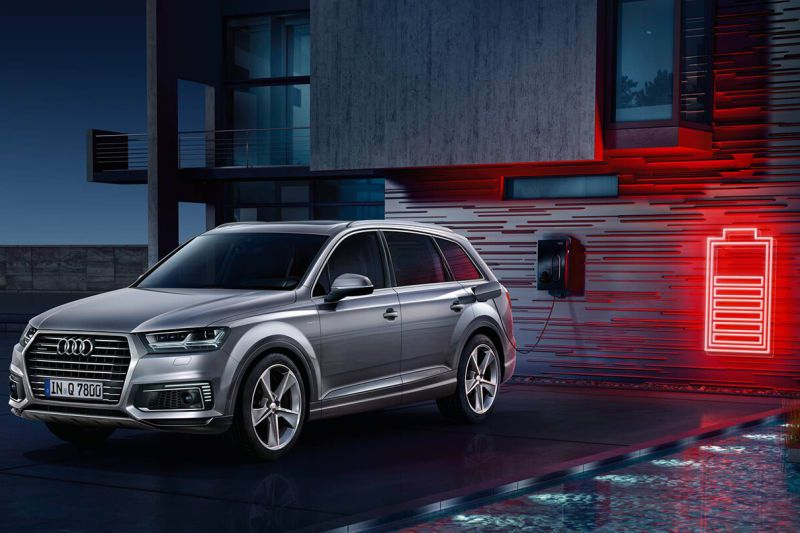
Does a Hybrid make a good choice for a company car?
There’s a very good and strong reason why business car drivers are leading the switch to hybrids and it’s all to do with one of the most powerful weapons the government has in influencing consumer behaviour – tax.
Hybrids have been shielded from the worst of the increases in Company Car Tax as the government starts to move drivers out of diesel and petrol cars into something which has at least some degree of electrification. A pure diesel, for example, has a three per cent surcharge on its Company Car Tax regardless of how efficient it is; a diesel hybrid is exempt.
Whatever you think of the rights or wrongs of this, how the industry was encouraged into diesel 20 years ago by governments favouring it over petrol and is now being taken in another (hugely expensive) direction, is an issue for another day.
Hybrids help anyone liable for a Benefit-in-Kind charge future proof themselves against whatever happens when the WLTP emissions tests come into force this September and the true scale of vehicle emissions are laid bare.
It won’t make pleasant reading for many, as CO2 output is likely to be considerably higher than currently advertised. Given that Benefit-in-Kind bands are based on cars’ CO2 outputs it will follow, as surely as night follows day, that millions of drivers will discover their car is officially a worse polluter than they thought and therefore open to being taxed at a higher rate.
It won’t be quite that cataclysmic because the Benefit-in-Kind changes won’t start to bite for a couple of years, or at least not under current government thinking, but they will certainly be affecting them within the time frame of a typical three year deal for cars bought now.


Having higher CO2 output figures is a problem from one direction; from another is that any future government is likely to widen the bands to catch more cars in the net of the higher rates.
As has been pointed out, many times, the government needs motoring taxes. Getting a precise figure is not easy, but just in direct taxes alone and not counting fines or fees for MOTs and such, motorists overall pay slightly more than £50 billion a year to the Treasury.
Figures just released from the Treasury show that in 2015-16, 960,000 people received a company car Benefit-in-Kind and paid £1.49 billion plus an additional £600 million in National Insurance contributions to the government for the privilege.
But, there is a problem. The RAC Foundation reckons that Fuel Duty revenue more than tripled between 1987 and 2010, then flattened at around £27bn before rising 2.1 per cent to £28bn in 2016; however, as engines become ever more fuel efficient that revenue will fall back, leaving a hole in the public finances.
The Department for Transport says that, since the year 2000, petrol cars burn on average 32% less fuel and diesels 28%; fuel consumption and emissions are fundamentally linked. The RAC Foundation calculates that in 2016, VED (car tax) which is based on CO2 emissions generated around £6 billion alone. As engines become cleaner the Treasury would be on a loser, unless of course, it moves the goalposts to trap more cars in higher tax bands.
There can be little doubt that once the full data from the WLTP test protocol is revealed, many hybrids will be exposed as not being as eco-friendly as many think at present. But, and it is a big but, their CO2 figures should still be very competitive against a pure diesel or petrol car, so their tax liability should still be attractive.
As an example, it’s probably accurate to say that a petrol hybrid car with CO2 emissions of 100 g/km which qualifies for a 13% Benefit-in-Kind rate would probably be in at least the 18% rate band if it was non-hybrid and had just a petrol engine. For a £20,000 car such as a mid-size SUV or hatchback, that could easily save you £1,000 per year.
To demonstrate the power of a hybrid in slashing tax costs, take the case of the Audi Q7. This is a big seven seater luxury SUV and there is a diesel/plug-in electric hybrid version called the e-tron. Officially this averages 157 mpg, emits just 48 g/km of CO2 and falls into a 13% Benefit-in-Kind band. A non-hybrid version, also with a 3.0 litre diesel, averages 47 mpg, emits 158 g/km and drops into the 36% tax band…

This advantage in hybrid’s favour could have a secondary effect. Many companies have their own CO2 bands which employees must choose their cars from and this too will give hybrids a push as they will fare better in this test than a purely petrol or diesel car.
A third consideration in the argument that company car drivers are future proofing themselves by opting for hybrids is that one, two or three years down the line all the signs indicate that these dual-fuel cars will be even more in demand on the second-hand market than they are today, and at the expense of conventional engines. That will impact residual values which in turn affects whole life costs.
No one can truly say at this stage how it will all turn out, but the twin car tax threat from WLTP and Treasury revisions to the Benefit-in-Kind bands make it absolute sense to guard against almost certain car tax increases, which are surely waiting just around the corner.
The future may well be uncertain, but what is certain, is that getting yourself into the lowest CO2 vehicle going is the best way to shield yourself against future rises.